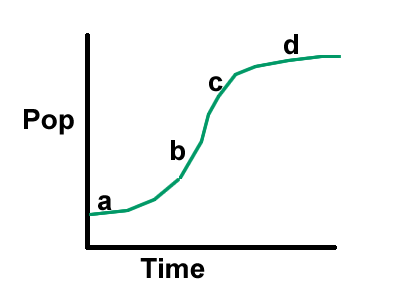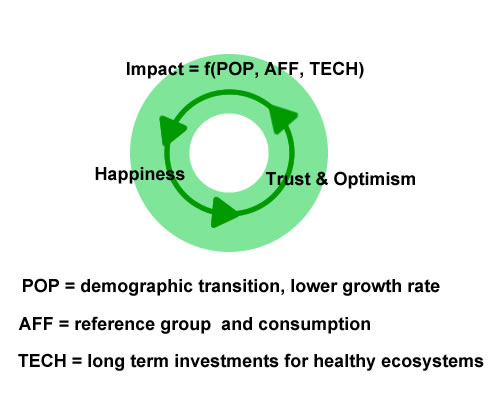Week 5: "Risk and Uncertainty"
and "Games View of Decisions"
|
Themes
Uncertainty can't be reduced to risk.
Sources of uncertainty are variability, measurement/perception, and human volition.
There is substantial uncertainty of the harvest of renewable natural resources, such as grass, trees, and fish.
Games decision square ....
Schedule for this lecture
- Overview of how these two topics tie together
- Risk
- Uncertainty
- Games - decision squares
- The "commons" and growth rate of natural resources
- Games against nature
- Applying these to environmental problems
over at 11 today
|
2. RISK |
Probabilistic estimate of damage based on
probability an event
probablilty of exposure
probabiliity of exposure leading to damage
example: truck carrying toxic chemicals crashes
|
3. UNCERTAINTY |
broad range of possible outcomes makes it impossible to predict the future
Sources:
inherent variation or unpredictability of complex systems
inadequate methods or limts to perception and measurement
human decisions
example: fishery harvest - don't know how many fish or exactly how fast they're growing or the real efficiency of the fishing methods
|
|
Indeterminacy
is a type of uncertainty that we may cause by employing bigger projects and overwhelming energy/ power density
|
Uncertainty is different than risk
Risk can be calculated
mitigate with insurance or choosing to employ multiple methods to solve a problem (portfolio)
Uncertainty
develop scenarios - define the possible outcomes
scientific adaptive management - one tenet is to take management actions that reduce the uncertainty for future management actions
Dealing with uncertainty - identify it, don't underestimate, need different tools, ways to communicate
|
4. GAMES - DECISION SQUARESYou have to make a decision to take an action. Your opponent has to make a decision. |
| |
Your roomate - buys pizza on the way home |
Your roomate - doesn't buy pizza |
| You - buy pizza on the way home |
Lots of pizza |
just the right amount of pizza |
| You - don't buy pizza |
just the right amount of pizza |
no pizza - everybody is upset |
|
example based on using common pastures
more later |
| |
Your neighbor - grazes early |
Your neighbor - grazes at approved time |
| You - graze early |
You both do poorly. |
Best for you,
worst for neighbor |
| You - graze at approved time |
Worst for you,
best for neighbor |
Good for both of you |
|
| Uncertain events at the level of a home or street |
| |
No tornado |
Tornado comes right down your street |
| You - spend money to prepare for
a bad tornado |
You "wasted" your money |
You suffered only minor damage and lived through the
storm |
| You - spend the money on a new TV |
You didn't waste your money and you have a cool TV
in front of your lounger |
Your house is wrecked and it isn't the same watching
your TV from a folding chair |
|
| Uncertainty about global outcomes |
| |
Turns out, no global warming |
Global warming hits hard |
| You - spend money to prepare for
global warming |
You "wasted" your money |
You suffered only minor damage |
| You - spend the money on more highways |
You didn't waste your money and now you have cool
highways |
Your life is wrecked and you need all the highways
in NY are under water |
|
5. UNDERSTANDING THE COMMONS
Resources can be depleted or not, can exclude other users or not
Common Pool Resource - can be depleted AND can't exclude other users
Private Goods - can be depleted AND can
exclude
Club - private resources that aren't depleted
Public Goods - open to all and can't be depleted
|
Simple growth model
Logistic Growth Model" has exponential growth and then limitation
positive feedback at a
negative feedback at c
steady state at d |
"

|
Harvest at mid-point
Maximum sustainable yield MSY
because net growth rate =
individual gr X population
|
 |
| Harvest too much |
 |
| Harvest the right amount but when population is too low |
 |
| How do you how much is just right? |
Need to know the crop and many details.
For example: a pasture
grass growth rate - changes with height of grass (about 3" is best)
soil nutrients and water availability - changes daily
consumption by grazers (cows, etc.)
damage from grazers that reduces growth (weather dependent, other factors such as movement)
even though you can see it - there is a lot of uncertainty
Fisheries -
Forests - future weather predictions for replacement over long periods (decades)
|
Dealing with uncertainty |
identify it:
don't underestimate it:
people think they know more than they do and that they can control stuff they can't
people confirm their own biases
need to use different tools:
decision square as a game against nature
create scenarios (102)
environmental entrepreneurism (102)
scientific adaptive management (101)
communicate about it:
not risk
sources
there are approaches we can take
|
CAVEAT: It is difficult to deal with uncertainty in public discourse
•People trust ideas and solutions that they are comfortable with
•They are not comfortable with uncertainty
•We need trust to develop institutions for sustainable use of resources
•Even though environmental science may “embrace uncertainty” it doesn’t mean that the public will
•Solutions might have to have some sort of recognition factor.
Frey 2011 - states that people have to be happy to make sustainable decisions, i.e. satisfied with their lives

|
Summary/Next steps
- themes of this lecture
- read the chapters - good description of fisheries and how we might use stock and flow models to address uncertainty
- readings - background on commons, growth models
- videos address games (prisoners dilemma and tragedy of the commons)
- simulations - when parameters of the growth are uncertain, what can you do? Variability in carrying capacity.
Next week we will review 5 approaches, discuss how to create narratives from many views, and how to choose "modes of engagement" based on knowledge/uncertainty, control, and human values.
|
| |
|





![]()